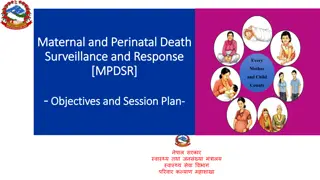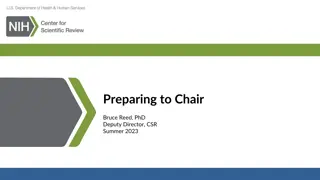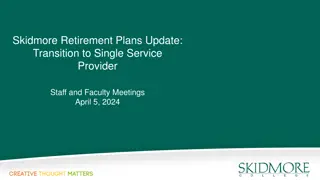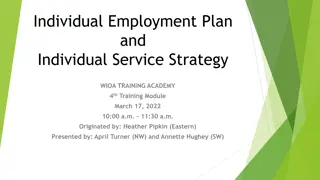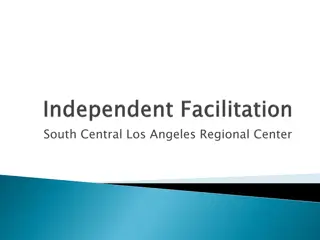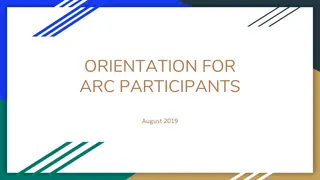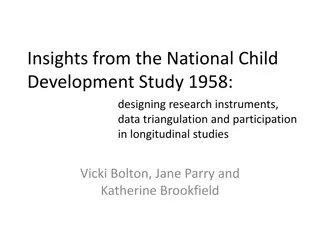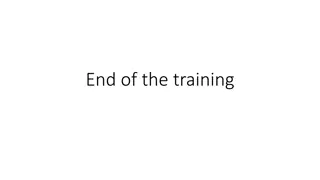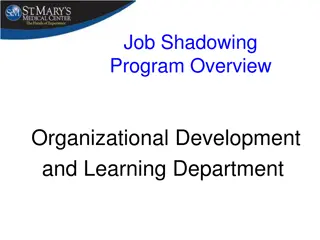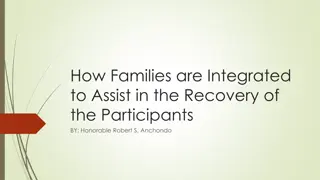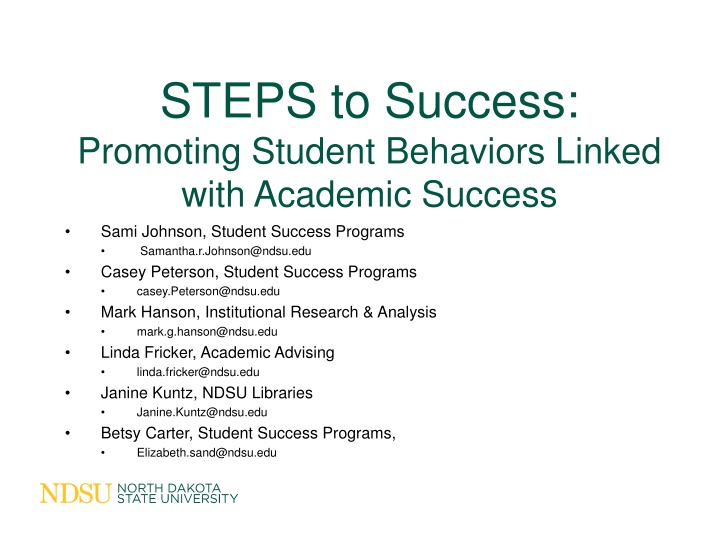
Student Behavior Perceptions: Key Insights for Academic Success
Gain valuable insights into student behaviors related to academic success, including attendance, study habits, faculty interaction, and commitment to earning a degree at NDSU. Discover the perception versus reality in student behaviors to enhance strategies for promoting academic success.
Download Presentation

Please find below an Image/Link to download the presentation.
The content on the website is provided AS IS for your information and personal use only. It may not be sold, licensed, or shared on other websites without obtaining consent from the author. If you encounter any issues during the download, it is possible that the publisher has removed the file from their server.
You are allowed to download the files provided on this website for personal or commercial use, subject to the condition that they are used lawfully. All files are the property of their respective owners.
The content on the website is provided AS IS for your information and personal use only. It may not be sold, licensed, or shared on other websites without obtaining consent from the author.
E N D
Presentation Transcript
STEPS to Success: Promoting Student Behaviors Linked with Academic Success Sami Johnson, Student Success Programs Samantha.r.Johnson@ndsu.edu Casey Peterson, Student Success Programs casey.Peterson@ndsu.edu Mark Hanson, Institutional Research & Analysis mark.g.hanson@ndsu.edu Linda Fricker, Academic Advising linda.fricker@ndsu.edu Janine Kuntz, NDSU Libraries Janine.Kuntz@ndsu.edu Betsy Carter, Student Success Programs, Elizabeth.sand@ndsu.edu
Student Behavior: Perception vs Reality How many students report that they attend class at least 90% of the time? 4 out of 5 students reported that they attend class at least 90% of the time.
Student Behavior: Perception vs Reality On average, how many hours a week do students report that they spend preparing for class? NDSU Students spend an average of 13 to 16 hours a week preparing for class.
Student Behavior: Perception vs Reality How many students report that they finish their homework before class at least 90% of the time? 3 of 4 students finish their homework before class at least 90% of the time.
Student Behavior: Perception vs Reality How many students report that they meet with faculty at least once a semester to work on special projects, conduct research, or get help on coursework? 4 of 5 students meet with faculty at least once a semester to work on special projects, conduct research, or get help on coursework.
Student Behavior: Perception vs Reality How many students feel that it is important to approach college like a full-time job? 4 out of 5 students believe it s important to approach college like a full-time job.
Student Behavior: Perception vs Reality How many students report that they are committed to earning a degree at NDSU? 9 of 10 students are committed to earning a degree at NDSU.
NDSU Academic Experiences Survey Online Survey Development: Behaviors and attitudes related to positive academic outcomes Specific frequency information How many times a week do you do X ? How many times a week do you think most students do X ?
Sample Stratified random sample of 5,000 undergraduates Proportional GPA, Academic Level, and Ethnicity 816 completed and 789 used for analyses
Results 1. Students underestimate how much their peers are doing 2. High GPA students are doing more positive academic behaviors/attitudes than Low GPA students
What percent of the time do you/most NDSU students: All Students Item Percent of Time 3a Attend class as scheduled 3b Go to class on time 3c Sit near the front of class 3d Feel alert and engaged during class 3e Completed homework and reading You Most DifferenceP valueCohen's d ES 1.86 3.63 -1.77 *** 1.40 3.03 -1.63 *** 3.77 5.50 -1.73 *** 3.43 5.03 -1.60 *** 2.57 4.30 -1.73 *** 1.29 1.18 0.62 M 0.84 0.91 L L L L
What level of effort do you put into your academic work? Effort YOU Effort MOST GPA 1 = very high 2 = high 3 = medium 4 = low 5 = very low 2.0-2.5 2.5-3.0 3.0-3.5 3.5-4.0 Total 2.46 2.33 2.09 1.65 2.011 2.51 2.57 2.67 2.74 2.657
A students vs. C students A steady trend, students with a GPA of 3.5-4.0 report doing more of these positive behaviors and holding more of these positive attitudes than students with a GPA of 2.0-2.5. This finding is not meant to negatively differentiate between students but is rather evidence supporting a desire to encourage all our students to more fully engage in these behaviors because they are associated with success. 9 of 10 NDSU students use a personal calendar to prioritize their academic work. A majority of students check their NDSU email and Blackboard at least 16 times a week. 3 of 4 students participate in organized clubs or student groups during a typical week. 4 of 5 students believe it s important to approach college like a full-time job. NDSU students spend an average of 13 to 16 hours a week preparing for class. Most NDSU students start studying at least three days before an exam. Most students use tutoring or other academic services at least once a month. 4 of 5 students report attending class at least 90 percent of the time. 3 of 4 students finish their homework before class at least 90 percent of the time. 4 of 5 students believe it s important to register for and complete 15 credits a semester. 19 of 20 NDSU students meet with their academic advisor at least once a semester. 9 of 10 students are committed to earning a degree at NDSU. 4 of 5 students meet with faculty at least once a semester to work on special projects, conduct research, or get help on coursework. (NDSU Academic Experiences Survey, Spring 2015)
Reaching Faculty and Staff Hall Directors Academic Advisors Staff Senate Faculty Senate Student Affairs Directors
Reaching Students Orientation Welcome Scavenger Hunts and Trivia Listserv Emails Tutor and Counseling Center Training Student Government Presentations
Print Message Outlets Welcome Week brochure 2015-2016 Residential Life Calendar Handbook Handout/Pamphlet Napkin Holders Table Tents Bookmarks
Website ndsu.edu/studentsuccess/steps/
Discussion How can faculty begin to incorporate STEPS messaging into working with students?
Practical Application 1. Have a STEPS representative visit your classroom or student group. 2. Incorporate STEPS facts into your meetings with student advisees. 3. Work the messaging into normal announcements into your classroom. -e.g., Checking announcements on Bb and email.
Practical Application 4. Link messages to other academic skills resources -NDSU Counseling Center, ACE, Library, etc. 5. Use messages as basis to develop individual study tips for you class (see syllabus example) Source: Dr. Clayton Hilmert s PSYC 111 Syllabus
Practical Application: Syllabus Integration Source: Dr. Clayton Hilmert s PSYC 111 Syllabus

